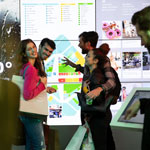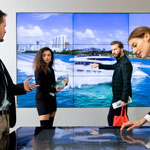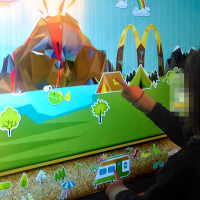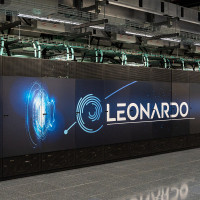
CULTURAL HERITAGE
Culture heritage becomes an experience
Solutions to attract visitors, entertain them and inform them through digital engagement.
It all starts with the boards, on which the map of the place and the red dot "you are here" were reproduced. A static image, printed on paper or PVC, maybe a little faded by time and sunlight, difficult to update, impossible to take away along a path. It was a useful service, but, in the age of digital communication, it could be definitely improved. Today we have less and less time and the interaction passes from the screens of the most common digital devices, smartphones and tablets. It is this way of looking for simple and fast information by touching a surface with your fingers that has turned Wayfinding into an advanced system.
Interactive Digital Wayfinding lets you establish an itinerary, find places of interest, optimize the time spent in a large structure, such as a shopping mall, a business center, corporate buildings, hotels, large cruise ships, fairs, hospitals, stations, airports...
In short, it is a precious tool, but to grasp its potential, let's take into account some strategic factors.
Although the basic function of Wayfinding, or helping people to reach their destination of interest, seems elementary, it actually requires a content strategy. Today, people are used to getting what they are looking for in a few moments: your Wayfinding system must be just as fast and efficient. To give your visitors what they are looking for, you need to know them better, their needs and expectations. Only then can you determine which and how much information to make appear on the screen in order to guarantee a satisfying experience.
Setting up a Wayfinding system involves a careful evaluation of the spaces. The structure's entrances are the most obvious solution to place interactive screens, but be careful not to overlook the most frequented places or areas where people flow, such as squares. The layout of the installation must also be taken into consideration. Kiosks, with a vertical display, can be used in confined spaces, while the horizontal displays allow several people to interact simultaneously and are suitable for large and frequented spaces. Also consider the lighting conditions of the premises, in order to avoid the displays being exposed to direct light, causing legibility problems of what is on the screen.
Interactive Wayfinding allows for better use of space and an independent search for information by visitors, so you don't need to place an information office in your facility. On the other hand, no matter how simple, each network requires content updating operations: always make sure to assign this task to someone in your staff, who is also able to manage the data collected to create reports useful for service improvement.
Which places should be included in the Wayfinding system? Under which category do you place them, so that they are easily found by users? What other items do you include? For example, toilets, ATMs, catering... What about security information? Evacuation areas, positions of fire extinguishers, emergency exits... carefully plan the architecture of the information to be offered, also in view of changes (for example, a shop that changes the product sector in the store gallery) and implementations (a new department inside a clinic, for example).
In addition to allowing orientation, Interactive Wayfinding is also a communication tool. It's part of your world, be it a company or a public body. It must therefore be visually consistent with that world and its logic, so that there is a continuity that strengthens your brand. Make sure that the colors, the graphic layout, and the style are all in line with your communication. The system screen, when not in use, must stimulate engagement, while navigation must quickly lead to the contents sought. The experience must be rewarding in order to associate positive experience with your brand.
The level of detail of the Interactive Wayfinding map depends on the complexity of the place it intends to reproduce. Today, it is possible to implement 2D or 3D maps, but in the presence of environments with many rooms, which may spread over several levels, it is a good idea to "keep it simple", so that the proposed itineraries are always visually very clear. Care must be taken to display the starting and ending points, making the route visible with contrasting animations and colors. Some systems allow you to communicate via smartphone, for example by downloading the itinerary with a QR code.
Interactive Digital Wayfinding simplifies the life of your visitors, helping them to better manage their stay within your structure. In addition to giving a welcome service, it helps brand awareness and stimulates dialog. Like all digital systems, it allows you to gather information on user habits, their preferences and behaviors, so you can constantly improve the quality of their experience in your facility.

Solutions to attract visitors, entertain them and inform them through digital engagement.

We transform shopping centers, making them spaces where people come together, socialize and relax.

Trade shows, events, seminars, conventions, and art galleries become overwhelming experiences.

Creating a digital entertainment area for children, where they can tackle new challenges and socialize.

The interactive multimedia installation created by Touchwindow for CINECA transforms the spaces into an immersive and emotional journey. Seamless 4K projections, multi-touch displays, holographic screens, and a live capture system—perfectly integrated within the environment—convey CINECA’s mission: innovation, research, and digital transformation in the service of people and progress.

Through Interactive Transparent Oled, visitor can make a virtual tour of the Estate and discover how grapes turn into an excellent wine, during and interactive and engaging activity that combines tradition and the latest technology trend.